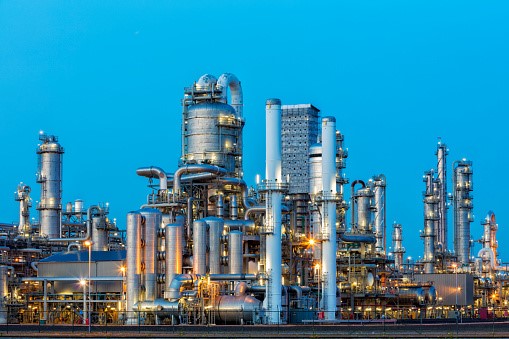
I. CEO Message
II. HR Comments
III. Industry Update
IV. Introduction to Double Check Company
V. Employee Spotlights
VI. 2023 Safety
VII. Construction Corner
VIII. East Region Operations Update
IX. Customer Spotlight
Industry Update – Bill Reichold
I’m an inquisitive person by nature. The guy that looks over the shoulder of the refrigerator repair person, plumber, or cable guy asking a bunch of questions about how it all works. And you’ve seen some of that in my articles in which I explained how gas is priced or why we have this crazy extra “9” in the unit price. This month we’ll learn about how gasoline is made.

The journey form crude oil to a petroleum fuel is a long one consisting of many steps. That gallon of fuel in your car’s tank has likely traveled hundreds, if not thousands, of miles. At a high level, let’s walk through the steps.
First, crude oil is extracted from the ground:
Crude oil is where petroleum fuels get their start, and crude oil gets its start underground. It’s pumped out of the ground using sophisticated drilling and extraction technology, which we’ve developed for both land and sea operations.
It’s then transported to refineries for processing:
Once extracted, the crude is trucked or piped to refineries for processing. This is where crude is processed into a variety of fuels and other petroleum products.
If necessary, the crude is stored prior to processing:
It’s typical for crude to make a stop at the refinery before it is processed. While it waits, the crude is kept in storage tanks. Crude from multiple sources may be mixed together while it’s stored, but it will all be refined the same way once it’s time.
During refining, the crude is distilled and separated:
The refining process is complex and has gotten more complex (and efficient) with time. At the heart of the process is distillation and separation. During distillation, the crude is boiled and separated by density. Lighter compounds evaporate and rise while heavier compounds are drawn down by gravity. Propane, butane, gasoline, kerosene, jet fuel, diesel, fuel oil, lubricants, and bitumen (for asphalt production) are all separated into different processing channels using this approach.
Distribution:
Once separated (per above) the different fuels are sent their appropriate way into pipelines, holding tanks, trucks, or trains and eventually to our local convenience store/gas station.
*Content courtesy of the Fuels Institute
